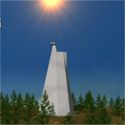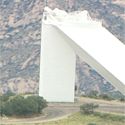|
|
 |
The Sun is both the star closest to Earth and the primary controlling force for the Earth's environment. As such, the study of the Sun helps astronomers understand stars in general and, by extension, galaxies and the universe, as well as the Earth's living conditions. For both of these reasons, the National Solar Observatory provides leading-edge telescopes and instruments for observing the Sun.
|

Solar Telescope Animation
|

Kitt Peak Video
|
NSO operates telescopes on Kitt Peak in Arizona and on Sacramento Peak in New Mexico. Kitt Peak is home to the McMath-Pierce Solar Telescope Facility, the largest solar instrument the world, as well as SOLIS: a new telescope that will make detailed observations over the entire disk of the Sun for decades at a stretch. Sacramento Peak is home to the Dunn Solar Telescope, one of the world's highest-resolution solar telescopes, as well as the Evans Solar Facility and the Hilltop Dome Facility.
|

Live view of the sun from Kitt Peak National Observatory
|
NSO also manages the Global Oscillation Network Group (GONG), which is studying "sunquakes" to understand the Sun's internal structure and dynamics. In order to exploit this new technique, called helioseismology, GONG has developed a six-station network of extremely sensitive and stable imagers, located around the globe, to obtain nearly continuous observations of the Sun's pulses. Helioseismology offers the promise of unraveling many mysteries of the Sun and, in turn, the universe.
Looking to the future, NSO is leading a consortium of 22 institutions in the design of an Advanced Technology Solar Telescope (ATST). If approved, the ATST will give astronomers their sharpest view yet of the Sun's incessantly active surface. Indeed, the ATST will be an indispensable tool for studying solar magnetism, which is crucial to the understanding sunspots, solar storms, and other such physical processes that ultimately affect the Earth.
|

These videos require RealPlayer. |
|

